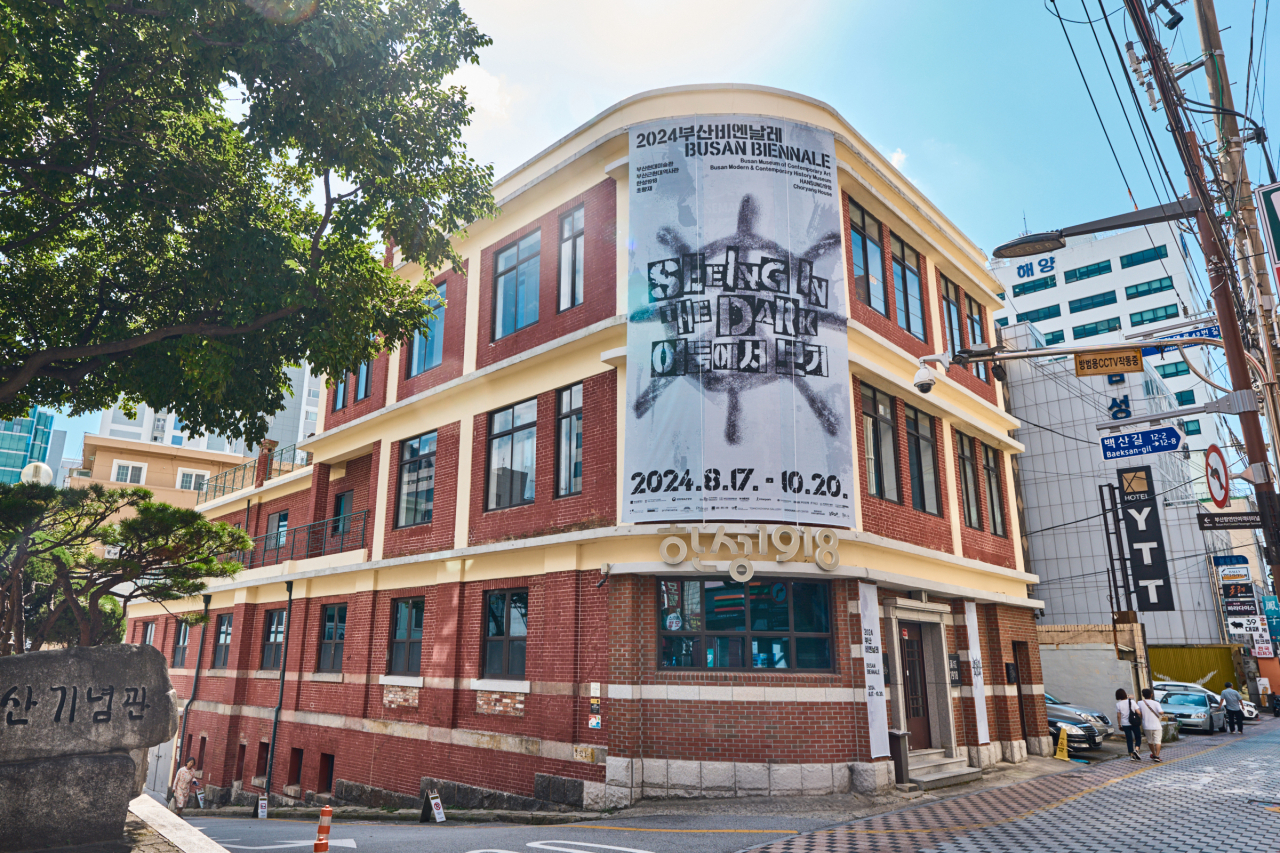August 20, 2024
BUSAN – Busan Biennale 2024 kicked off Saturday in the port city, moving up the opening date from its regular fall opening as part of the Culture Ministry’s Korean Art Week centering around the upcoming Frieze Seoul.
Curated by two artistic directors — Vera Mey and Philippe Pirotte — the biennial took the theme of “Seeing in the Dark.” The curators drew upon the idea of pirate utopias as early forms of autonomous societies that served as a refuge for the socially or politically exiled.
“One guide (for the theme) was the history of pirates, not just as this cliche of fighting robbers etc., but that is the kind of people who were not allowed in normative societies and who were refugees, fugitives that started alternative societies,” said Pirotte on Friday during the press tour.

Hansung 1918 housed a bank founded during the Japanese colonial era. PHOTO: THE KOREA HERALD
Radical American anthropologist David Graeber who argued that 18th-century pirate society inspired Enlightenment in Europe was a key figure in their thinking, the curators said. Another complementary concept of the exhibition is the Buddhist monastic way that centers on humility in a community departing from secular life.
“We are really guided by two concepts of pirate enlightenment and Buddhist enlightenment as a way to navigate a terrain that is unknown and questions the concept of the self and as a place which you have to use other senses to navigate,” Mey said.
The 65-day biennale takes place across four venues — Busan Museum of Contemporary Art, Busan Modern and Contemporary History Museum, Hansung1918 and Choryang House — joined by 62 artists and collectives from 36 countries.
The artistic directors hinted that they tried to guarantee autonomy for the participating artists.
“This (theme) was a brief to the artists, not a question to illustrate it. It is rather an attitude or reflection,” Pirotte said. “What do artists think when we talk about things like seeing in the dark, pirate enlightenment or Buddhist enlightenment? And everybody reacts in a different way.”
Buddhist monk and artist Song Cheon’s two, 8-meter-tall paintings on hanji, traditional Korean mulberry paper, titled “Avalokiteshvara and Marry-The Truth Has Never Left My Side” is an overwhelming, yet delicate work. Next to the paintings is “The Eyes of Truth” another piece by the artist that depicts eyes gazing at the viewers.

“Dub Plants” by Joe Namy. PHOTO: THE KOREA HERALD
Media artist Joe Namy’s 8-meter-tall installation created with bamboo stands as a transmitting tower titled “Dub Plants” that explores the historically connected kinship between radio culture and agriculture.
Hong Lee Hyung-sook invites viewers to participate in “Blackout Journey” for 30 minutes. As an artist who has been exploring solidarity with non-human and marginalized beings, seeking to decentralize from mainstream human existence, she has the viewers explore complete darkness with the visual sense blocked and other senses heightened.
“I wanted to bring the concept of using other senses to the museum, where people heavily rely on the visual sense,” the artist told The Korea Herald.


